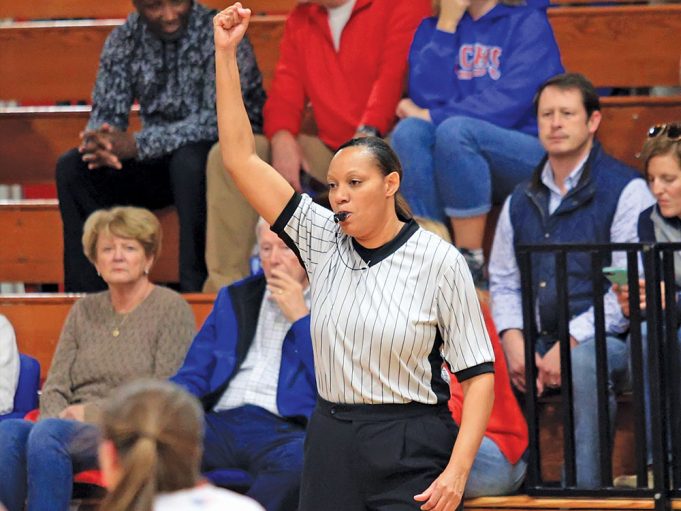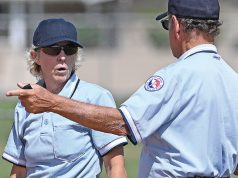Using video for training purposes is no longer the discovery of the age. Gone are the days we have to give a blank video cassette or DVD in a self-addressed stamped envelope to the home team’s coach hoping that in a week or a month we’ll get it back with a recording of the game we worked for him or her. Lack of video is no longer the problem, and claiming it isn’t out there means only that someone is too lazy to go hunting for it.
Sometimes clips of ourselves we’d rather not see go viral show up online. Those snippets have a different kind of value, more in the way of morbid curiosity for the average fan and a sadistic form of revenge-seeking from the poster.
But for the purpose of this column, let’s stick to the topic of video gathered and screened for training officials. Even though our collective hearts have been in the right place for years, there are still some out there who haven’t grasped the protocol and decorum necessary regarding use of this valuable training tool.
Get it ready for presentation.
If you just put in the video at your local association meeting and wait for plays to come up for discussion, or fast forward until you reach specific points, you’ll be wasting the precious time of your fellow officials. Instead, invest in editing software or use the tools of your fellow officials to document the footage you need effectively. Pull the plays that you want to use and save others for future presentations.
You don’t own the film.
That said, there are provisions in the copyright law for limited use of video clips for educational purposes. You may do a slam-bang job of gathering, editing, narrating and spiffing up the video you show at one or multiple camps or meetings. But you can’t sell or widely distribute the video for your own gain. Think of your efforts as giving back, not making a buck.
Take the sound out of it.
Unless it’s relevant to the discussion, remove any commentary or ambient sound from the video. Exceptions would be if a referee’s skill at announcing penalties is being scrutinized or officials’ in-game audio is picked up by sideline microphones.
Use a limited number of plays.
Too many plays can overload the mind and take away from what you were trying to emphasize. Limit the plays so that people will be able to remember the key points of the presentation. There are many game situations that officials don’t get to practice regularly because of their rarity in the game — plays such as momentum inside the five yardline, basket interference, passing a runner, etc.
Focus on one aspect.
Each meeting or pregame discussion can focus on one particular area of concern, for example, umpire rotation or penalty kicks. Just as too many plays can cause focus issues, so can too many topics.
Focus on mechanics, not judgment.
Every official has missed a big play. There is little, if anything, to gain by highlighting the mistake. Even if the play you are showing has a missed call, try to focus the attention on what could have been done to get in better position to see the key elements of the play better. Was the official slow to cover a play or too close to the action? Was the official screened out?
Point out the positives.
It is important to learn from your mistakes and those of others. However, it is also a good idea to show plays that are positive in nature. Video breakdown shouldn’t be just negative plays. Officials can learn from good examples as well.
Protect egos.
A leader can use him or herself as a negative example to establish credibility when using video. Someone who is critiquing others can constructively soften critical blows heaped on others by directing some inwardly. Open the session with, “Hooboy, you wanna see an official kick the heck out of one? Have I got a clip for you!” and you could very well have the crowd in the palm of your hand.
In that same vein, any official in the group who is going to be shown making an error should at least be forewarned. People who are ambushed in that way in a room full of their peers tend to be defensive. What is intended to be an instructional session turns into a debate or worse.
Best case is giving the official a head’s up and having him or her provide a first-person tour through the thought process on why things broke down, the lessons learned and how things will be handled differently down the road.
Video is like any other resource. Used correctly, it can enhance, educate and inform. Misused, it can do far more harm than good. Do some good.
What's Your Call? Leave a Comment:
Note: This article is archival in nature. Rules, interpretations, mechanics, philosophies and other information may or may not be correct for the current year.
This article is the copyright of ©Referee Enterprises, Inc., and may not be republished in whole or in part online, in print or in any capacity without expressed written permission from Referee. The article is made available for educational use by individuals.


















